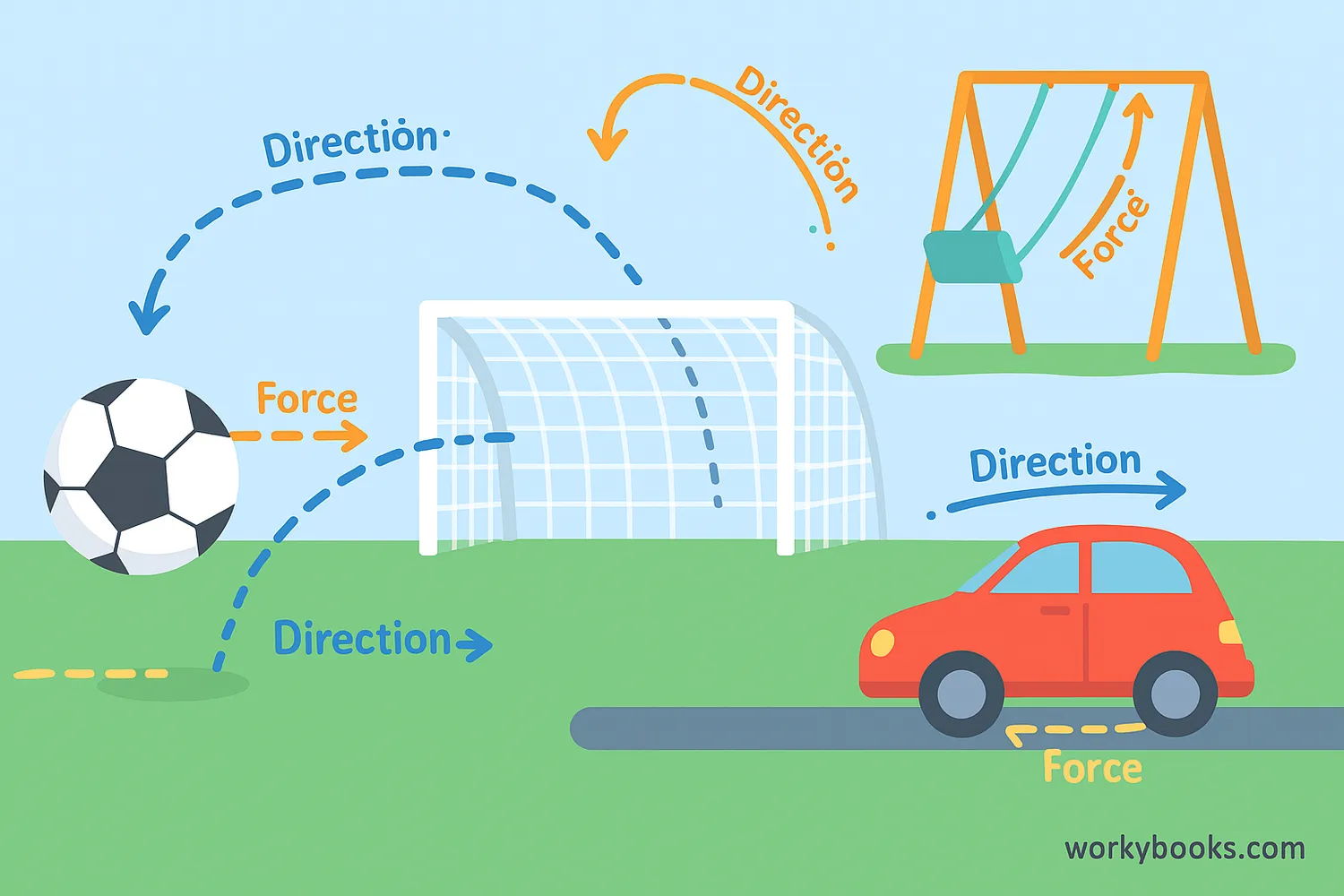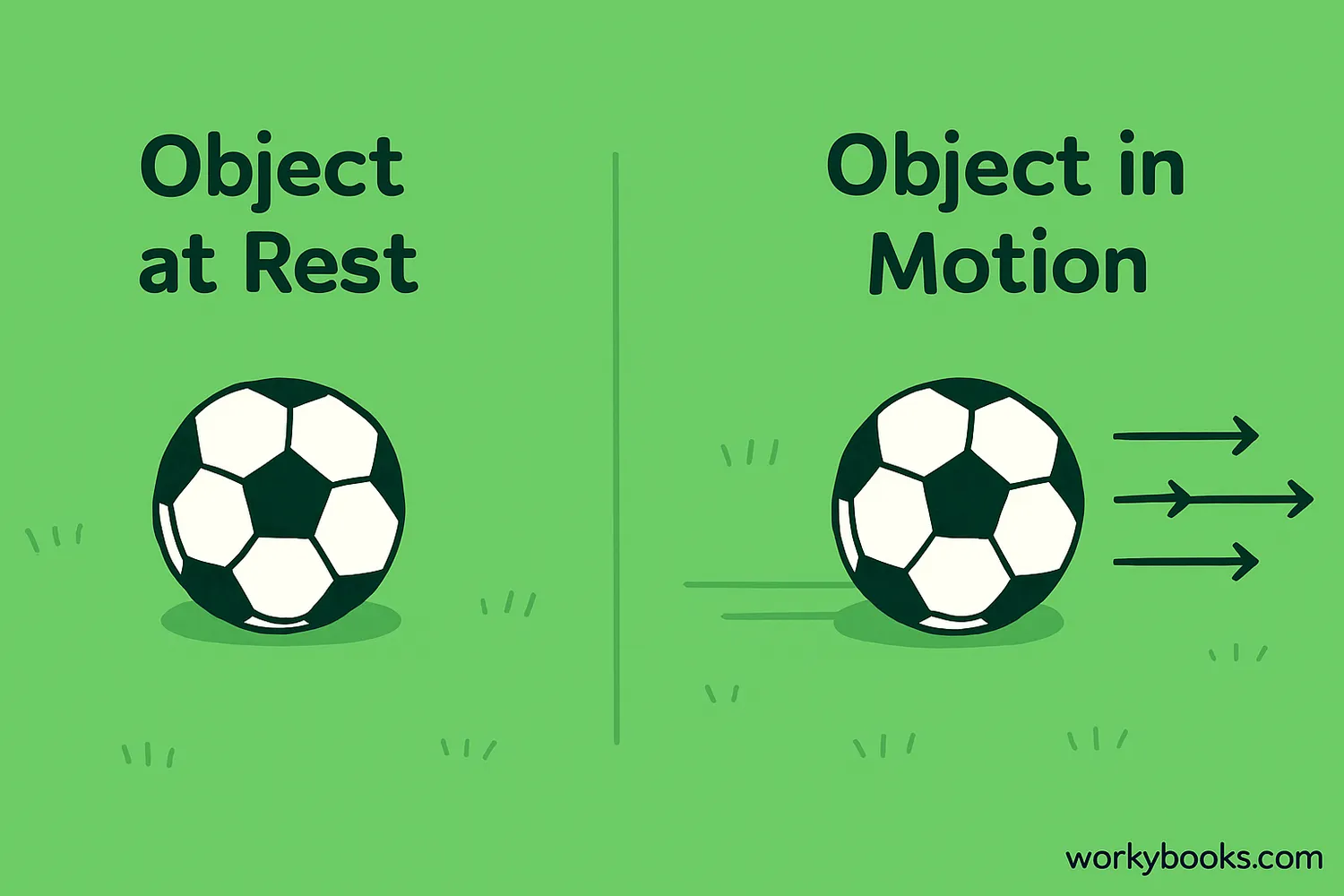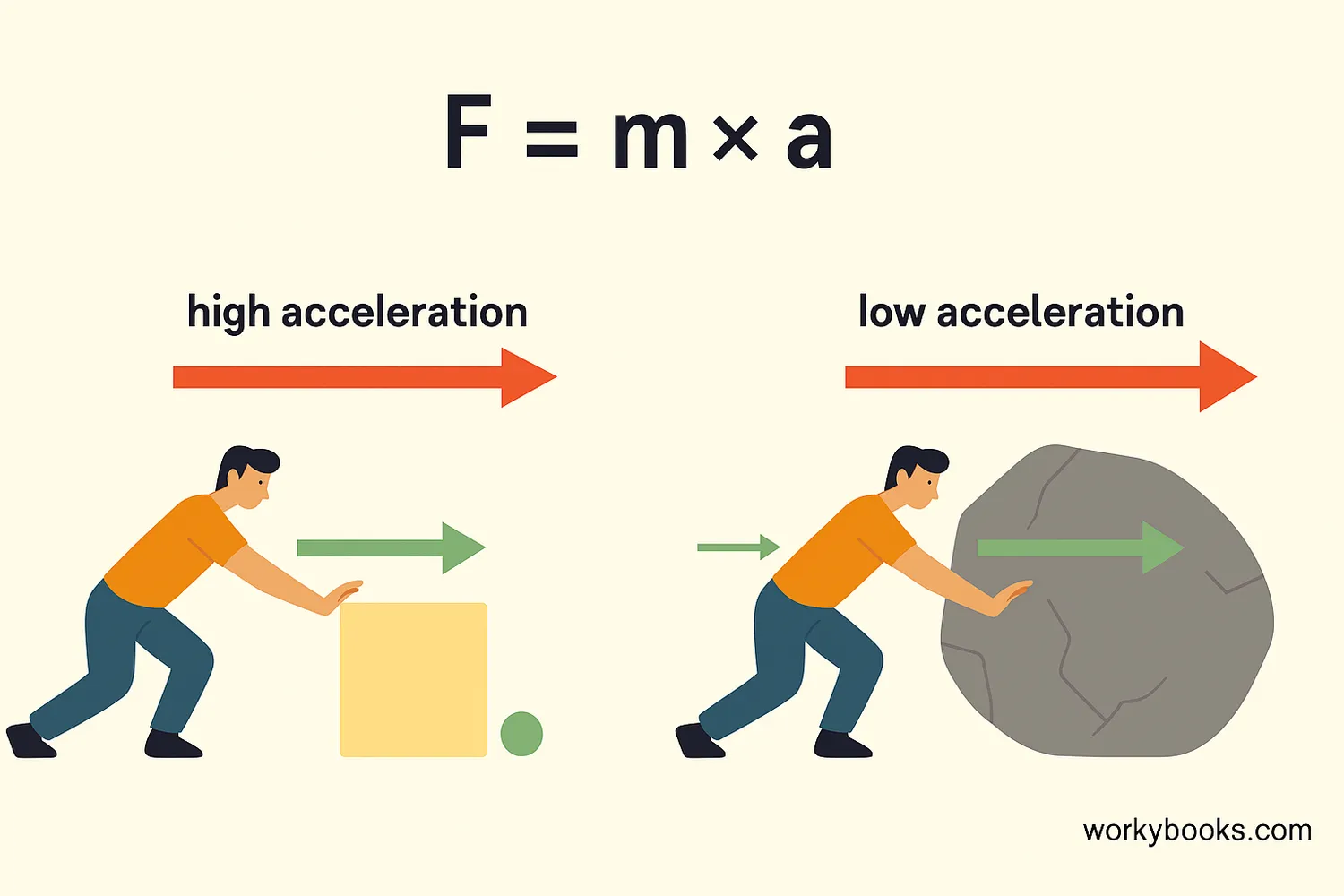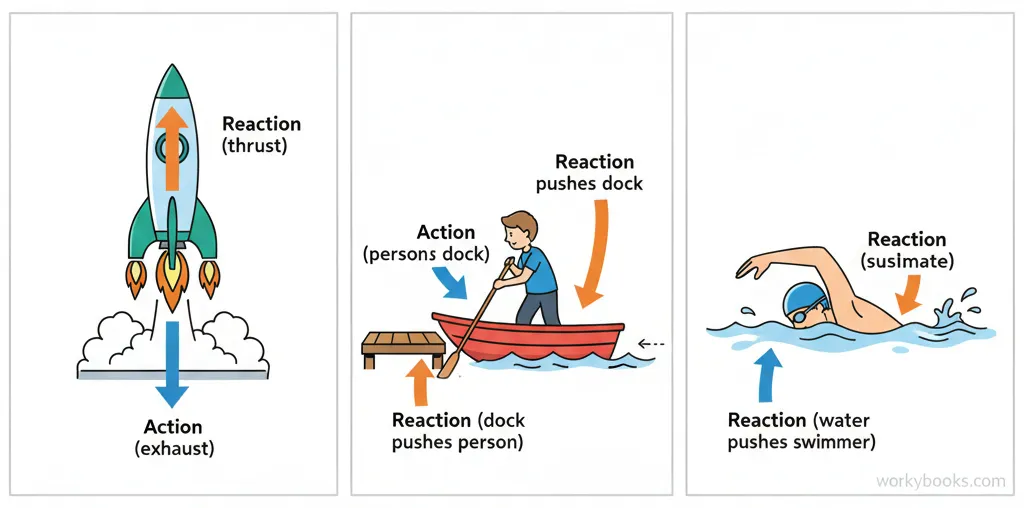Predicting Motion - Definition, Examples, Quiz, FAQ, Trivia
Discover how forces and Newton's Laws help us predict how objects move
What is Predicting Motion?

Predicting motion means using scientific principles to figure out how objects will move before they actually move. Scientists and engineers use knowledge of forces, mass, and energy to forecast where objects will go and how they will behave.
Key facts about predicting motion:
• Motion prediction relies on Newton's Laws of Motion
• Forces cause changes in an object's motion
• The mass of an object affects how it moves when forces act on it
• We can predict motion using mathematical equations
Think of predicting motion like being a motion detective! You gather clues about forces, mass, and direction to solve the mystery of where something will move next.
Key Concept
Predicting motion involves understanding how forces affect objects. By knowing the forces acting on an object and its mass, we can forecast its future position and movement.
Sports Example
A soccer player predicts where the ball will go based on how they kick it - the direction and force applied determine the ball's path.
Transportation Example
Engineers design cars with safety features by predicting how they will move during collisions and how passengers will be affected.
Space Example
Scientists precisely calculate rocket trajectories to ensure spacecraft reach their destinations like the International Space Station.
Newton's First Law of Motion

Newton's First Law (also called the Law of Inertia) states that an object at rest will stay at rest, and an object in motion will stay in motion with the same speed and in the same direction, unless acted upon by an unbalanced force.
Key points about the First Law:
• Objects naturally resist changes to their motion
• This resistance to change is called inertia
• Heavier objects have more inertia than lighter objects
• Unbalanced forces are needed to change motion
Think of inertia like being cozy in bed on a cold morning - you want to stay exactly as you are unless something (like an alarm clock or parent) makes you change!
At Rest Examples
- Book on table: Stays until someone moves it
- Parked car: Remains stationary until driven
- Soccer ball: Won't move until kicked
In Motion Examples
- Ice hockey puck: Slides far on smooth ice
- Spacecraft: Drifts without engine thrust
- Rolling ball: Would keep rolling without friction
Unbalanced Forces
- Gravity: Pulls objects downward
- Friction: Slows moving objects
- Push/Pull: Changes object motion
Newton's Second Law of Motion

Newton's Second Law states that the acceleration of an object depends on the net force acting on the object and the mass of the object. We write this as the famous equation: Force = mass × acceleration (F = m × a).
What this means:
• More force causes more acceleration (if mass stays the same)
• More mass means less acceleration (if force stays the same)
• Acceleration is in the same direction as the net force
• The equation helps us calculate exact motions
Think of the Second Law like shopping carts - an empty cart accelerates quickly when you push it, but a full cart (with more mass) accelerates slowly with the same push!
Calculating Motion
Using F = m × a, we can predict exactly how objects will move. For example, if we know a car has a mass of 1,000 kg and we apply 2,000 N of force, we can calculate its acceleration: a = F/m = 2,000/1,000 = 2 m/s².
Rocket Launch
Massive rockets need enormous force (thrust) to accelerate against Earth's gravity. As fuel burns, mass decreases, allowing greater acceleration.
Bowling
A heavier bowling ball needs more force to achieve the same acceleration as a lighter ball. Professional bowlers develop the right force for different ball weights.
Sprinting
Runners push against the ground with force. The acceleration depends on their mass and how much force their muscles can generate.
Newton's Third Law of Motion

Newton's Third Law states that for every action, there is an equal and opposite reaction. When one object exerts a force on a second object, the second object exerts a force of equal strength in the opposite direction on the first object.
Key points about the Third Law:
• Forces always occur in pairs
• Action and reaction forces are equal in size
• Action and reaction forces are opposite in direction
• The forces act on different objects
Think of the Third Law like friendship - when you high-five a friend, your hand applies force to their hand, and their hand applies equal force back to yours!
Rocket Propulsion
Rockets push exhaust gases downward (action), and the gases push the rocket upward (reaction). This is how rockets work in space where there's no air to push against.
Walking
When you walk, your foot pushes backward against the ground (action), and the ground pushes forward on your foot (reaction), moving you forward.
Bouncing
When a ball hits the floor, it pushes downward on the floor (action), and the floor pushes upward on the ball (reaction), making it bounce back up.
Putting It All Together
To accurately predict motion, scientists use all three of Newton's Laws together. The First Law tells us about inertia, the Second Law gives us the mathematical relationship between force, mass and acceleration, and the Third Law explains how forces come in pairs between interacting objects.
Motion Prediction Quiz
Test your knowledge of predicting motion with this 5-question quiz. Choose the correct answer for each question.
Frequently Asked Questions
Here are answers to common questions about predicting motion:
Science Trivia
Discover amazing facts about motion prediction:
Precise Space Calculations
When NASA sends spacecraft to Mars, they have to predict motion so precisely that they account for the gravitational pull of other planets and even the pressure of sunlight on the spacecraft!
Basketball Arc
Basketball players intuitively understand motion prediction. The perfect shot has a 45-degree arc, and players learn through practice how much force to apply from different distances.
Animal Motion Prediction
Cats are masters of motion prediction. Their brains can calculate complex trajectories, allowing them to accurately jump to precise locations and catch fast-moving prey.
Newton's Discoveries
Isaac Newton developed his laws of motion in the 1660s while Cambridge University was closed due to plague. His "year of wonders" revolutionized how we understand motion.


